Imagine setting sail on crystal-clear waters, charting your own course among hidden bays and sun-drenched islands. The appeal of a bareboat charter lies in this unique sense of freedom and adventure, especially as 2025 brings new opportunities and innovations to independent sailing.
This essential guide will walk you through everything you need to know about bareboat charter in 2025. From updated requirements and the latest trends to top destinations and step-by-step planning, you will discover how to make your next voyage seamless and unforgettable.
Understanding Bareboat Charter: What It Is and How It Works
Imagine taking the helm of your own yacht, setting the course, and making every decision at sea. This is the essence of a bareboat charter, where you rent a vessel without crew or provisions, granting you full control and responsibility for your adventure.
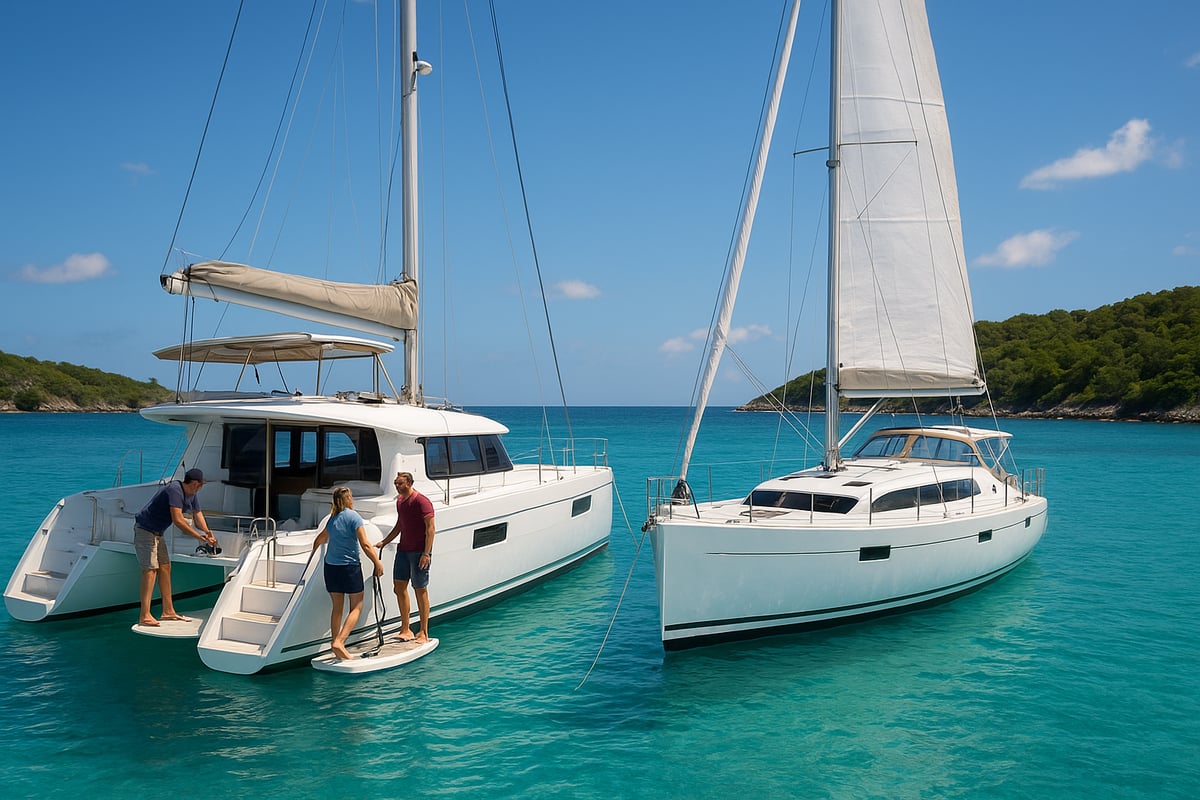
Definition and Distinctions
A bareboat charter involves renting a yacht, sailboat, or catamaran without any crew or supplies included. You and your group become the skipper and crew, managing everything from navigation to provisioning.
To understand how a bareboat charter differs from other options, consider this comparison:
| Charter Type | Crew Provided | Provisions Included | Who Navigates? | Level of Independence |
|---|---|---|---|---|
| Bareboat Charter | No | No | You | Full |
| Skippered Charter | Yes (Skipper) | Sometimes | Skipper | Moderate |
| Crewed Charter | Yes (Full) | Yes | Crew | Minimal |
With a bareboat charter, you accept both legal and practical responsibilities. This means ensuring the vessel’s safety, following maritime regulations, and caring for the boat throughout your trip. Typical vessels include:
- Monohulls: Classic sailing yachts, known for their agility.
- Catamarans: Spacious, stable, and increasingly popular for families or groups.
- Motor yachts: Offer speed and comfort but require more fuel management.
Charter durations range from single-day outings to multi-week voyages. Popular markets include the Caribbean for turquoise waters, the Mediterranean for culture and history, and the Pacific for remote island exploration. According to industry research, bareboat charters account for a significant segment of global yacht rentals, reflecting their enduring appeal. For a practical breakdown of the process and regional insights, visit this bareboat charter guide Charleston.
Who Is Bareboat Charter For?
A bareboat charter is ideal for experienced sailors, adventurous families, and groups seeking independence on the water. Most companies require proof of sailing skills, such as certifications like the International Certificate of Competence (ICC) or RYA Day Skipper, along with logged experience.
In addition to technical skills, charterers must be comfortable with navigation, docking, and handling emergencies. References from previous charters can strengthen your application and ensure a smooth booking process.
What draws people to bareboat charter? The benefits are compelling:
- Complete privacy: Sail with only your chosen crew.
- Flexibility: Set your own pace, itinerary, and stops.
- Cost savings: Avoid fees for crew and catering by managing your voyage.
However, there are challenges to consider. You are responsible for provisioning, navigation, and safety, which can be demanding in unfamiliar waters. For those ready to embrace both freedom and responsibility, a bareboat charter offers a truly rewarding experience.
Bareboat Charter Requirements and Qualifications in 2025
Before setting sail on a bareboat charter in 2025, understanding the latest requirements and qualifications is essential for a smooth, legal adventure. The landscape is evolving, with new technologies, updated certifications, and stricter compliance standards shaping the industry.
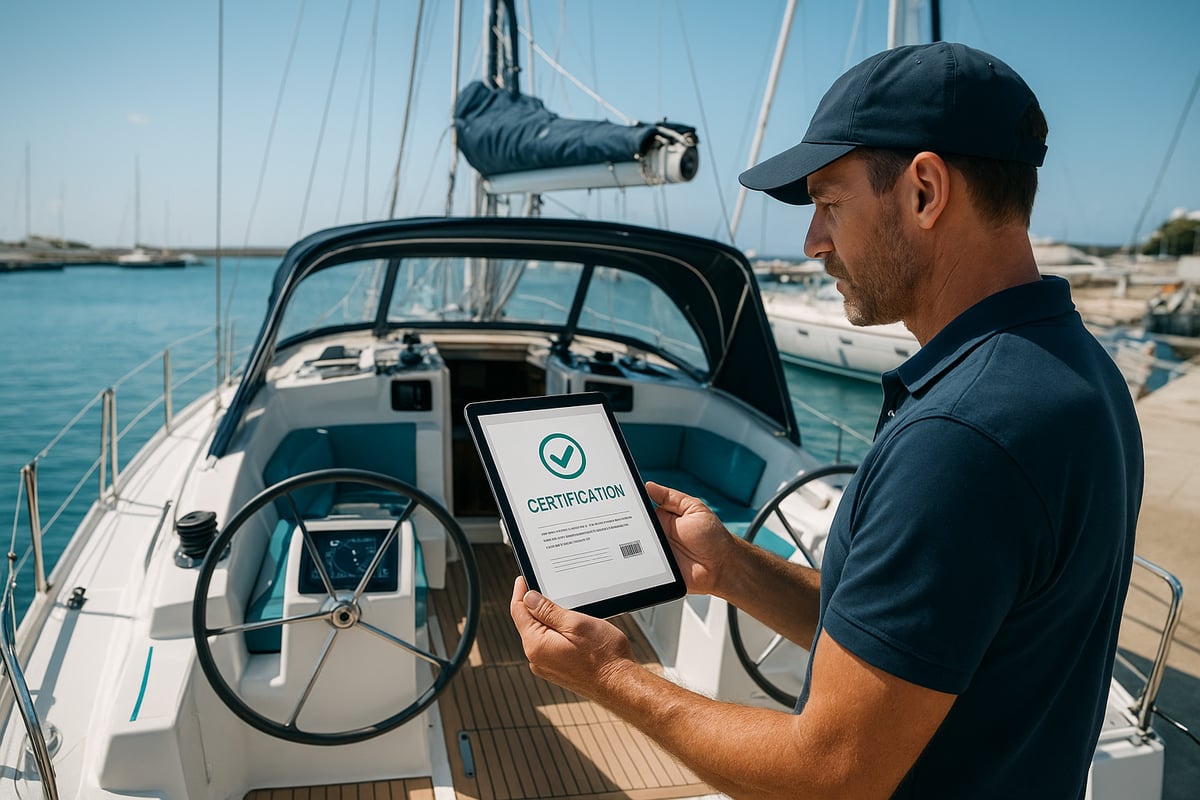
Licensing and Certifications
To qualify for a bareboat charter, skippers must hold specific licenses or certifications recognized internationally or regionally. The most commonly accepted credentials include the International Certificate of Competence (ICC) and the RYA Day Skipper certificate. Many charter companies also accept the American Sailing Association (ASA) Bareboat Cruising certification for charters outside Europe.
For 2025, digital certifications are widely accepted, making it easier to present credentials via mobile devices. This shift streamlines check-in processes and enhances security. Updated safety training modules, often completed online, are now mandatory for most destinations.
Country-specific regulations can vary. In the Mediterranean, Greece and Croatia require formal proof of competence, while Caribbean and Pacific destinations may have more relaxed standards but still expect documented experience. Insurance is another key aspect; charter companies typically require comprehensive coverage that includes vessel damage, third-party liability, and personal accident protection. Always confirm what is covered before departure.
For more details on evolving global standards and future requirements, the Bareboat Charter Market Research Report 2033 provides valuable insights into market trends and compliance expectations.
Experience and Skills Needed
Chartering a vessel independently requires more than paperwork; practical experience is vital. Most companies expect skippers to have logged at least 100 nautical miles and completed several days at sea. Prior bareboat charter experience, or references from previous charters, are significant advantages.
Essential skills include navigation, docking, anchoring, and troubleshooting common onboard issues. Familiarity with local marine charts, tides, and weather patterns is crucial for safe passage. Many companies request a sailing resume detailing your qualifications and recent experience.
Accepted qualifications by leading charter companies often include:
- ICC or RYA Day Skipper certification
- ASA Bareboat Cruising certification
- National boating licenses (where relevant)
New to bareboat charter? Consider enrolling in refresher courses or online navigation modules before your trip. These programs help build confidence and ensure you meet the minimum skill thresholds for a safe, enjoyable journey.
Documentation and Legalities
International bareboat charter adventures require careful attention to documentation. Passports must be valid for at least six months beyond your charter dates. Some regions also require visas, so always check entry requirements for your chosen destination.
Before your trip, expect to sign a comprehensive charter contract detailing your responsibilities, a security deposit agreement, and liability waivers. These documents protect both you and the charter company in case of unforeseen incidents.
A typical documentation checklist includes:
| Document Type | Required For | Notes |
|---|---|---|
| Passport | All charters | Validity 6+ months |
| Visa | Some destinations | Check entry requirements |
| Charter Contract | All charters | Review terms carefully |
| Security Deposit | All charters | Amount varies by vessel |
| Insurance Certificate | All charters | Confirm coverage details |
Compliance with local and international marine laws, including MARPOL regulations and environmental guidelines, is now strictly enforced. Charterers must ensure waste management protocols are followed and adhere to local restrictions on anchoring and protected areas.
By preparing the right documents and understanding legal expectations, you can focus on the adventure and freedom that a bareboat charter promises in 2025.
Choosing the Right Boat and Charter Company
Selecting the right vessel and charter provider is a crucial step in planning a successful bareboat charter. Your choices will directly impact comfort, safety, and the overall enjoyment of your sailing adventure. Let’s look at how to evaluate your options for 2025.
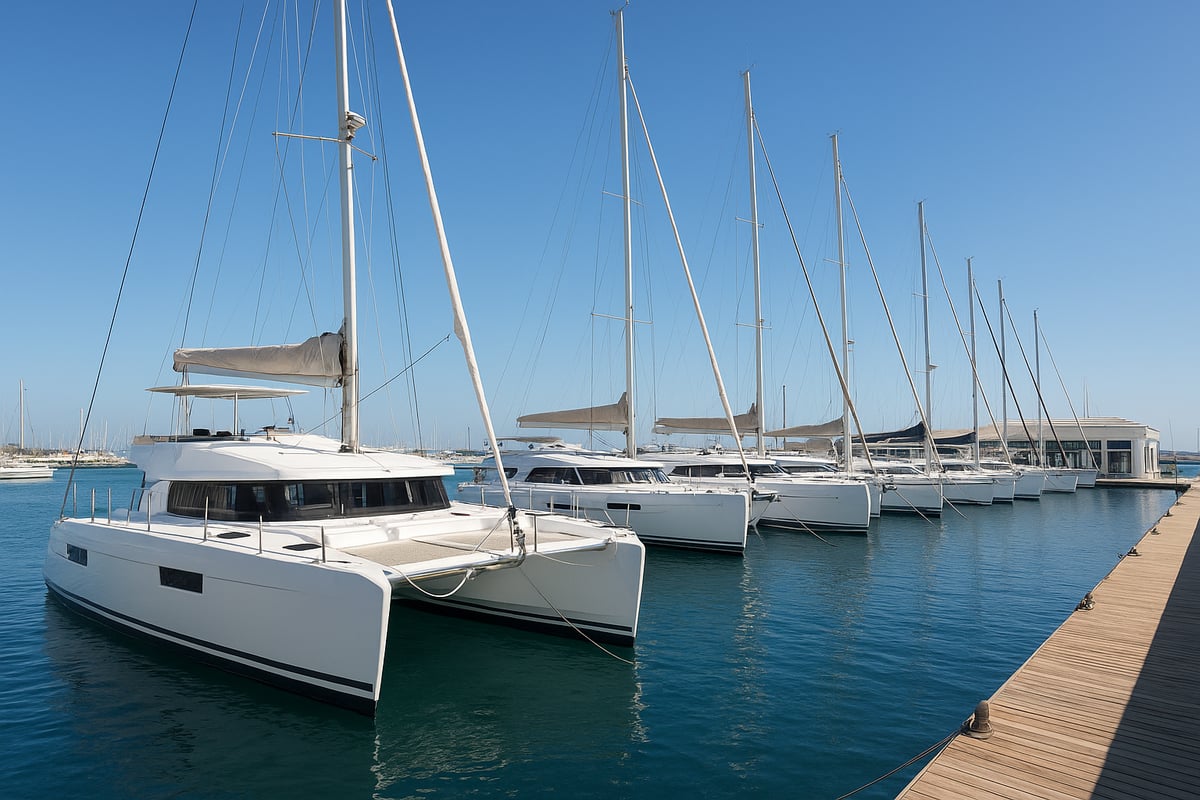
Types of Boats Available
When considering a bareboat charter, the type of boat you select will shape your entire experience. Monohulls are classic sailboats offering a traditional sailing feel and agility, making them ideal for adventure-seekers who enjoy responsive handling. Catamarans, on the other hand, provide extra stability and spaciousness, which is perfect for families or groups seeking comfort and a smooth ride.
Motor yachts are another option for those prioritizing speed and luxury. They offer powerful engines and modern amenities, but may come at a higher cost and require different handling skills. For 2025, many fleets are introducing eco-friendly features such as solar panels, hybrid engines, and advanced waste management systems. New smart navigation technology is also becoming standard, helping skippers plan routes and ensure safety during their bareboat charter.
Boat size and layout matter, too. Couples might prefer a compact two-cabin monohull, while larger groups may need a catamaran with multiple cabins and ample deck space. Always match the vessel to your crew’s needs and experience.
Here’s a quick comparison:
| Boat Type | Pros | Cons | Best For |
|---|---|---|---|
| Monohull | Agile, traditional | Less space, heels | Skilled sailors, couples |
| Catamaran | Stable, spacious | Wider, higher price | Families, groups, comfort |
| Motor Yacht | Fast, luxurious | Fuel cost, less sailing | Luxury seekers, easy travel |
Selecting a Reputable Charter Company
The quality of your bareboat charter is closely tied to the charter company you choose. Start by reviewing fleet maintenance standards, customer feedback, and the level of support offered before and during your trip. Reputable companies provide clear contracts, transparent pricing, and 24/7 emergency assistance.
Consider whether a global operator or a local specialist better matches your destination and expectations. Global firms like Dream Yacht Charter have extensive fleets and established reputations, while local companies may offer personalized service and unique regional insights.
Be vigilant for red flags such as poor vessel upkeep, unclear terms, or lack of certifications. The yacht charter market is evolving rapidly, with new trends and innovations shaping 2025’s offerings. For insights on emerging destinations, technology upgrades, and market shifts, consult resources like the Yacht Charter Market Dynamics 2025 report.
Budgeting and Cost Considerations
Budgeting for a bareboat charter requires careful planning. Charter costs vary widely based on region, season, boat type, and duration. For example, Mediterranean charters in peak summer are generally more expensive than Caribbean off-season trips.
Expect to pay not only for the base charter rate, but also for additional fees such as cleaning, fuel, marina berths, and insurance. Some companies may include extras like snorkeling gear or paddleboards, while others charge separately. Early booking can secure better rates and a wider selection, while last-minute deals are possible but come with limited choice.
Here’s a checklist to help you plan:
- Compare base rates across regions and seasons
- Factor in all potential extras and security deposits
- Review cancellation and refund policies for flexibility
With the right preparation, your bareboat charter can deliver excellent value and an unforgettable experience.
Top Bareboat Charter Destinations for 2025
Dreaming of your next bareboat charter adventure in 2025? The world offers a wealth of inviting destinations, each with its own charm, sailing conditions, and unforgettable anchorages. Whether you crave sunlit Mediterranean coasts, vibrant Caribbean waters, or far-flung Pacific isles, the right destination can transform your charter into a true voyage of discovery.
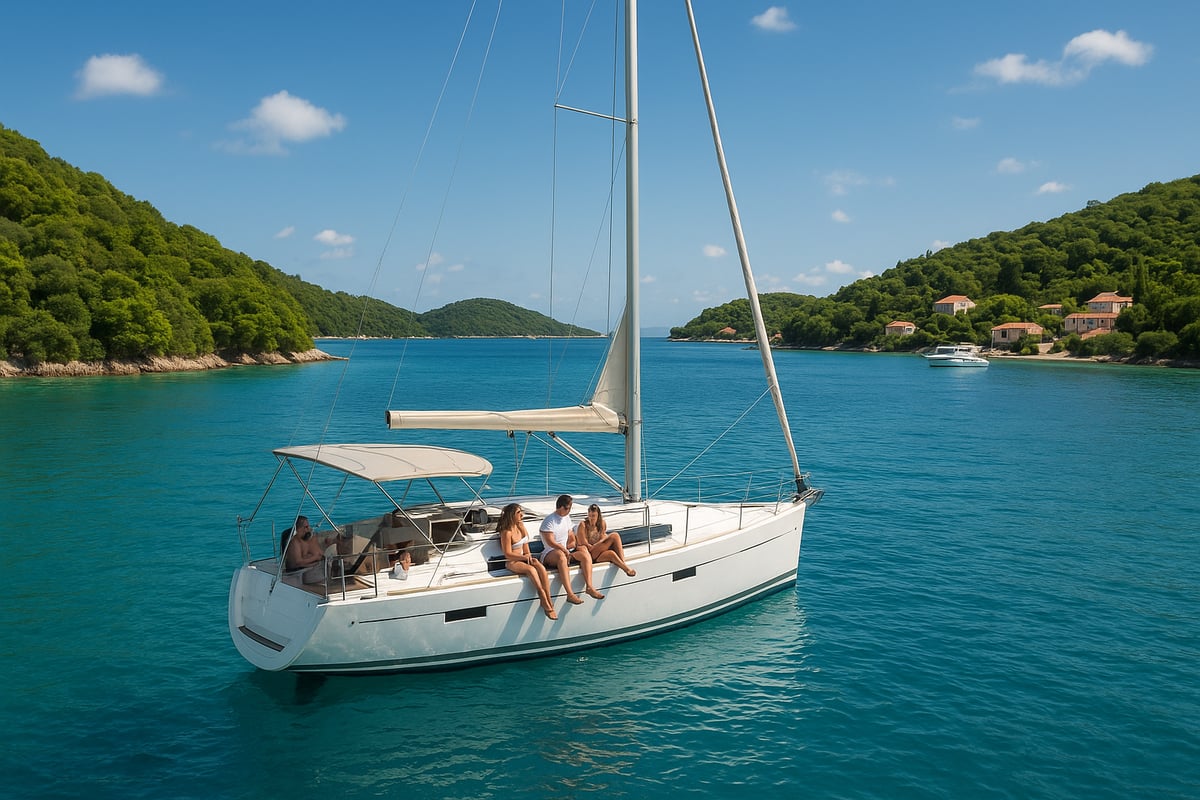
Mediterranean Hotspots
The Mediterranean remains a classic region for bareboat charter enthusiasts, offering a blend of culture, cuisine, and diverse sailing experiences. Greece stands out with its Ionian Islands and Cyclades, where line-of-sight navigation and reliable winds make it ideal for both novice and seasoned sailors. Croatia enchants with historic ports like Dubrovnik, Split, and the scenic Kornati archipelago, providing sheltered waters and plenty of marinas.
Italy’s Sardinia and Sicily entice with vibrant coastal towns, world-class food, and clear waters. Each destination in the Mediterranean brings unique highlights, from bustling harbors to peaceful coves. The region’s infrastructure and established charter fleets make it a top choice for a bareboat charter, especially for those seeking a mix of adventure and relaxation.
Caribbean and Bahamas
Caribbean waters are synonymous with laid-back sailing and postcard-perfect anchorages. The British Virgin Islands are famous for protected passages, gentle trade winds, and a lively sailing community. The Bahamas, particularly the Abaco and Exumas chains, offer shallow turquoise waters, secluded beaches, and world-class snorkeling.
If you seek less-trafficked routes, Grenada, Martinique, and St. Martin are gaining popularity for their unspoiled nature and authentic island culture. These destinations cater to a range of bareboat charter experiences, from easy island hops to longer offshore passages. For those interested in exploring more US-based options, consider browsing this Best places to sail in US guide for additional inspiration.
Exotic and Emerging Destinations
For bareboat charter travelers eager to venture further, emerging destinations provide truly unique experiences. The Seychelles in the Indian Ocean are renowned for their granite islands, coral reefs, and rare wildlife. Thailand’s Phuket and Phang Nga Bay promise year-round tropical sailing, dramatic limestone cliffs, and welcoming harbors.
In the South Pacific, Tahiti and New Caledonia beckon with remote anchorages and vibrant marine life. New charter bases opening in 2025 make these regions more accessible than ever. These exotic locales are perfect for those wanting to combine adventure, culture, and natural beauty in a single charter journey.
Factors to Consider When Choosing a Destination
Selecting the ideal bareboat charter destination involves more than just picking a spot on the map. Seasonal weather patterns can affect sailing conditions, with hurricane or cyclone risks in some regions. Accessibility is key, so check flight options, local transportation, and marina facilities.
Travel restrictions, visa requirements, and local regulations may impact your planning, especially in 2025. Consider special events or festivals that could enhance your experience, or conversely, increase crowds and prices. Prioritizing what matters most to your group—scenery, sailing challenge, amenities, or solitude—will ensure your bareboat charter is both safe and unforgettable.
What’s New in Bareboat Chartering for 2025
The world of bareboat charter is evolving quickly in 2025, offering new technology, greener vessels, and updated experiences for sailors. If you are planning a bareboat charter this year, it is important to understand the latest trends, innovations, and requirements before setting sail.
Technological Innovations
Technology is transforming the bareboat charter experience in 2025. Smart navigation systems are now standard on most new charter vessels, providing real-time weather updates, route planning, and onboard connectivity for safety and convenience.
Eco-friendly upgrades are another major development. Many yachts now feature solar panels, hybrid engines, and advanced waste management solutions. These enhancements help reduce environmental impact and make your bareboat charter more sustainable than ever.
Digital check-in and check-out processes allow charterers to complete paperwork and vessel walkthroughs remotely, saving valuable time at the marina. Remote vessel monitoring also enables companies to assist charterers more effectively during their trip.
Industry Trends and Statistics
The bareboat charter market is experiencing robust growth as travelers seek more flexible and private vacation options. Demand for sustainable charters has increased, with more companies offering green-certified vessels and highlighting eco-friendly practices.
Remote and less crowded destinations are surging in popularity, partly due to post-pandemic travel preferences. Flexible booking policies and expanded insurance options are also shaping the industry, giving sailors greater confidence to plan ahead. According to recent projections, the global yacht charter market is expected to reach $22.5 billion by 2032, reflecting the ongoing shift in travel dynamics (Yacht Charter Market Size to Reach USD 22.5 Billion by 2032).
Regulatory and Safety Updates
New international safety standards are being rolled out for bareboat charter vessels in 2025. These regulations focus on improving onboard equipment, emergency preparedness, and crew training requirements. Compliance with environmental rules, such as MARPOL and local marine protection laws, is now mandatory in more regions.
Health and cleaning protocols, introduced during the pandemic, remain in place for added safety. Charter companies are required to provide detailed safety briefings and ensure vessels meet updated hygiene standards before every voyage.
Enhanced Customer Experience
Customer experience is a top priority for bareboat charter companies in 2025. Many now offer customizable itineraries through mobile apps, allowing you to plan your route and activities with ease.
Provisioning and delivery services have improved, making it simple to stock your yacht with food and supplies before arrival. Virtual walkthroughs and pre-charter briefings are becoming standard, helping you and your crew feel confident and prepared for your adventure.
These advancements make a bareboat charter in 2025 more accessible, enjoyable, and memorable for sailors of all experience levels.
Step-by-Step Guide: Planning Your Bareboat Charter in 2025
Embarking on a bareboat charter in 2025 requires careful planning and attention to detail. By following a structured approach, you can ensure a seamless experience from preparation to setting sail. Here is your comprehensive guide, broken into clear, manageable steps for maximum confidence and enjoyment.
Step 1: Assess Your Qualifications and Choose Crew
Begin by evaluating your sailing resume and certifications. Most regions require that you or someone in your group holds an internationally recognized license, such as ICC or RYA Day Skipper. If you are new to bareboat charter, consider refreshing your skills with an online navigation course or practical sailing class.
Next, assemble your crew. Select individuals with compatible personalities and relevant experience. Assign roles for skipper, navigator, cook, and safety officer to distribute responsibilities efficiently. The privacy and flexibility of a bareboat charter are major draws, as highlighted in the advantages of private boat charters, making it ideal for families and groups seeking a personalized adventure.
Step 2: Select Destination and Charter Company
Research potential destinations by considering seasonal weather, accessibility, and local infrastructure. Popular spots for bareboat charter include the Mediterranean, Caribbean, and Pacific regions. Evaluate travel advisories and entry requirements for your chosen area.
When selecting a charter company, compare fleet quality, customer support, and online reviews. Look for transparent pricing, comprehensive support services, and a solid reputation. Early bookings often secure the best rates and widest choices, while special offers for 2025 may provide additional value.
Step 3: Choose Your Boat and Dates
Match your boat selection to the group’s size, preferences, and experience level. Decide between monohulls, catamarans, or motor yachts, each offering unique advantages for a bareboat charter. Consider modern vessels with eco-friendly features and smart navigation systems for enhanced comfort and sustainability.
Select your travel dates based on destination seasonality and crew availability. Confirm your booking as soon as possible to secure your preferred vessel, especially during peak periods. Flexible date ranges can help you take advantage of last-minute deals or early booking discounts.
Step 4: Prepare Documentation and Insurance
Gather all necessary documents before your bareboat charter. This typically includes passports, visas (if required), sailing licenses, and medical certificates. Review and sign the charter contract, ensuring you understand all terms, liability waivers, and security deposit requirements.
Arrange travel and charter insurance to protect against unforeseen events. Comprehensive coverage should include vessel damage, trip cancellation, and personal liability. Keep both digital and hard copies of all essential paperwork for easy access during your journey.
| Documentation Checklist | Required for Charter? |
|---|---|
| Passport | Yes |
| Sailing License | Yes |
| Visa (if applicable) | Sometimes |
| Charter Contract | Yes |
| Insurance Policy | Yes |
Step 5: Plan Your Itinerary and Provisioning
Chart your route by identifying must-see anchorages, marinas, and points of interest. Use digital navigation tools and local guides to plan daily distances and overnight stops. Reserve marina berths and restaurant bookings in advance, especially during high season.
Provisioning is crucial for a smooth bareboat charter. Decide whether to use provisioning services or shop locally before departure. Prepare a comprehensive shopping list that covers meals, snacks, and beverages for the entire crew, considering dietary restrictions and preferences.
Step 6: Pre-Departure and Safety Briefings
Complete online check-in processes and review virtual walkthroughs of your vessel. Attend the mandatory safety briefing provided by the charter company, focusing on emergency procedures, onboard equipment, and local regulations.
Check the latest weather forecasts and navigation updates before departure. Review the operation of all safety gear, including life jackets, fire extinguishers, and first aid kits. Ensure every crew member is familiar with their role in emergencies for a safe and confident start to your bareboat charter.
Step 7: Embark and Enjoy Your Bareboat Adventure
On embarkation day, conduct final checks of the vessel, inventory all equipment, and confirm that all documentation is onboard. Assign tasks for departure, such as mooring line handling and navigation setup, to ensure a coordinated start.
Once underway, monitor navigation and weather, maintain open communication among crew, and prioritize safety at all times. Embrace the freedom and adventure that a bareboat charter offers. With thorough planning and teamwork, you will create unforgettable memories while exploring your chosen destination.
Frequently Asked Questions About Bareboat Charter in 2025
Dreaming about your next bareboat charter adventure in 2025? You likely have questions. Here are answers to the most common queries, helping you plan with confidence and clarity.
What qualifications do I need for a bareboat charter in different regions?
Requirements vary by location. In the Mediterranean, you typically need an ICC (International Certificate of Competence) or an RYA Day Skipper certificate. The Caribbean is more flexible but still expects proof of sailing experience. Some countries now accept digital certifications, making qualification easier in 2025. Always check with your charter company for specific regional rules.
How much does a bareboat charter cost in 2025?
Costs depend on destination, boat type, and season. For a quick overview:
| Region | Low Season (USD/week) | High Season (USD/week) |
|---|---|---|
| Mediterranean | $2,500 – $6,000 | $4,000 – $12,000 |
| Caribbean | $2,200 – $5,500 | $3,500 – $9,000 |
| Pacific | $2,000 – $4,500 | $3,200 – $8,000 |
For deeper insights into pricing and trends, the Global Yacht Charter Market Report 2022 to 2027 provides a comprehensive industry analysis.
What’s included in a typical bareboat charter package?
A standard package covers the vessel, basic safety equipment, navigation tools, and insurance. Extras like cleaning, fuel, water toys, and provisioning are usually additional. Always review your contract for inclusions and exclusions.
How do I handle provisioning and fuel?
Many companies offer provisioning services, letting you pre-order groceries for your bareboat charter. Alternatively, you can shop locally before departure. Fuel is paid based on actual usage and is typically settled at the end of your trip.
Are pets and children allowed on bareboat charters?
Most charter companies welcome children, provided proper safety measures are in place. Pet policies vary, so check with your provider in advance. Child-friendly safety gear and netting are often available upon request.
What happens in case of emergency or equipment failure?
Reputable bareboat charter operators offer 24/7 support. In emergencies, contact your base or the local coast guard. Most contracts outline procedures for breakdowns, ensuring you receive timely assistance and minimizing disruption.
How far in advance should I book for 2025?
Booking at least 6 to 12 months ahead is recommended, especially for peak seasons. Early reservations often secure better rates and a wider choice of boats for your bareboat charter.
Can I charter a bareboat as a solo sailor?
Some regions and companies allow solo bareboat charter, provided you demonstrate sufficient experience and hold the necessary qualifications. However, safety considerations may require you to have at least one competent crew member on board.
Resources and Further Reading
If you want to deepen your understanding of bareboat charter, these resources will help you prepare for a successful voyage in 2025.
- Royal Yachting Association (RYA): Official site for sailing certifications and safety information.
- American Sailing Association (ASA): Online sailing courses and certification details.
- International Certificate of Competence (ICC): Guidance on international licensing requirements.
- Guide to boat rentals Charleston: Compare bareboat charter options with other rental types in the Charleston area.
- Dream Yacht Charter: Leading global charter company with a wide fleet and destination guides.
- Regional sailing regulations and weather resources: Check local maritime authority websites for up-to-date regulations and seasonal advice.
Explore these links to ensure your bareboat charter journey is informed, safe, and memorable.
If reading this guide has you picturing yourself at the helm, ready to embark on a bareboat adventure in 2025, you are not alone. Planning your own charter is about more than just booking a boat—it is about curating an experience that matches your group, your dreams, and the excitement of exploring at your own pace. Whether you are an experienced sailor or preparing for your first voyage, Blue Life Charters makes every step seamless, from choosing the right vessel to personalizing your itinerary. Ready to start your journey? Book Your Tour Today and let your next big adventure begin.

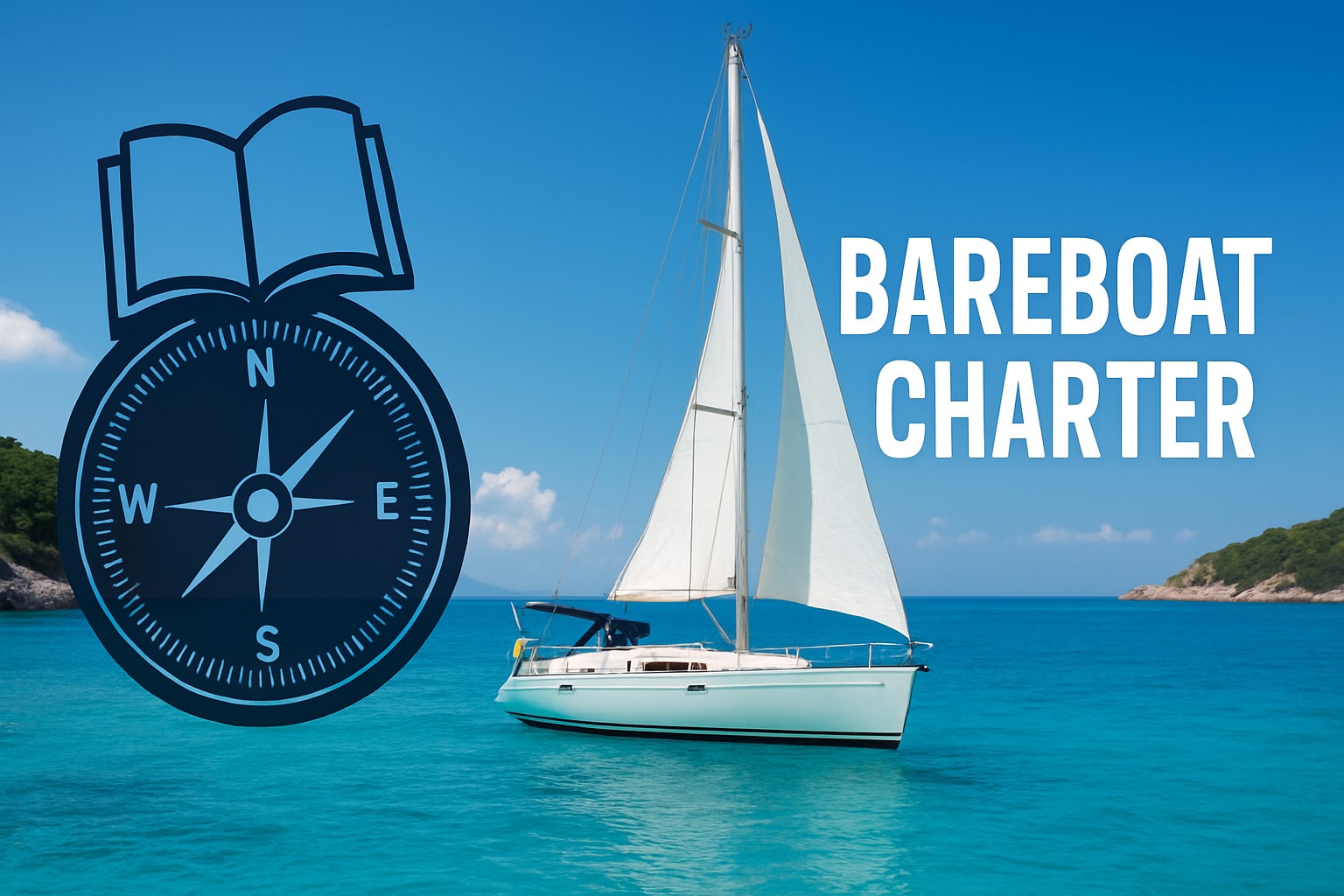
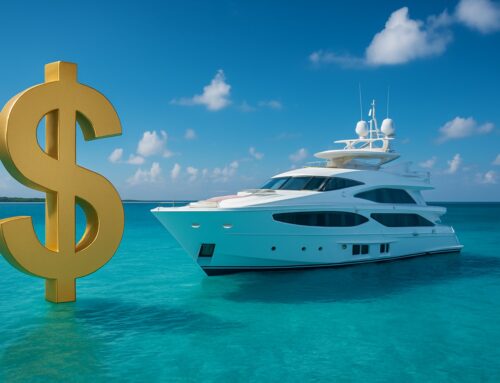
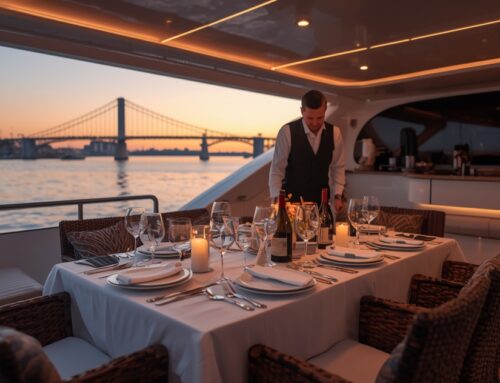
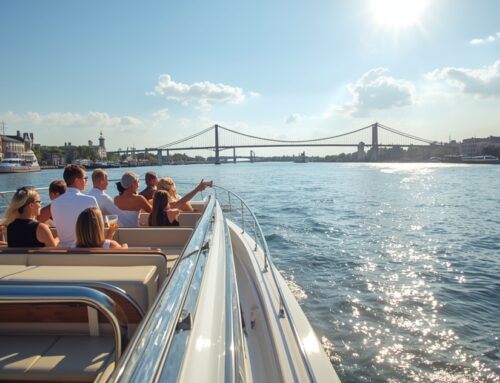

Leave A Comment
You must be logged in to post a comment.